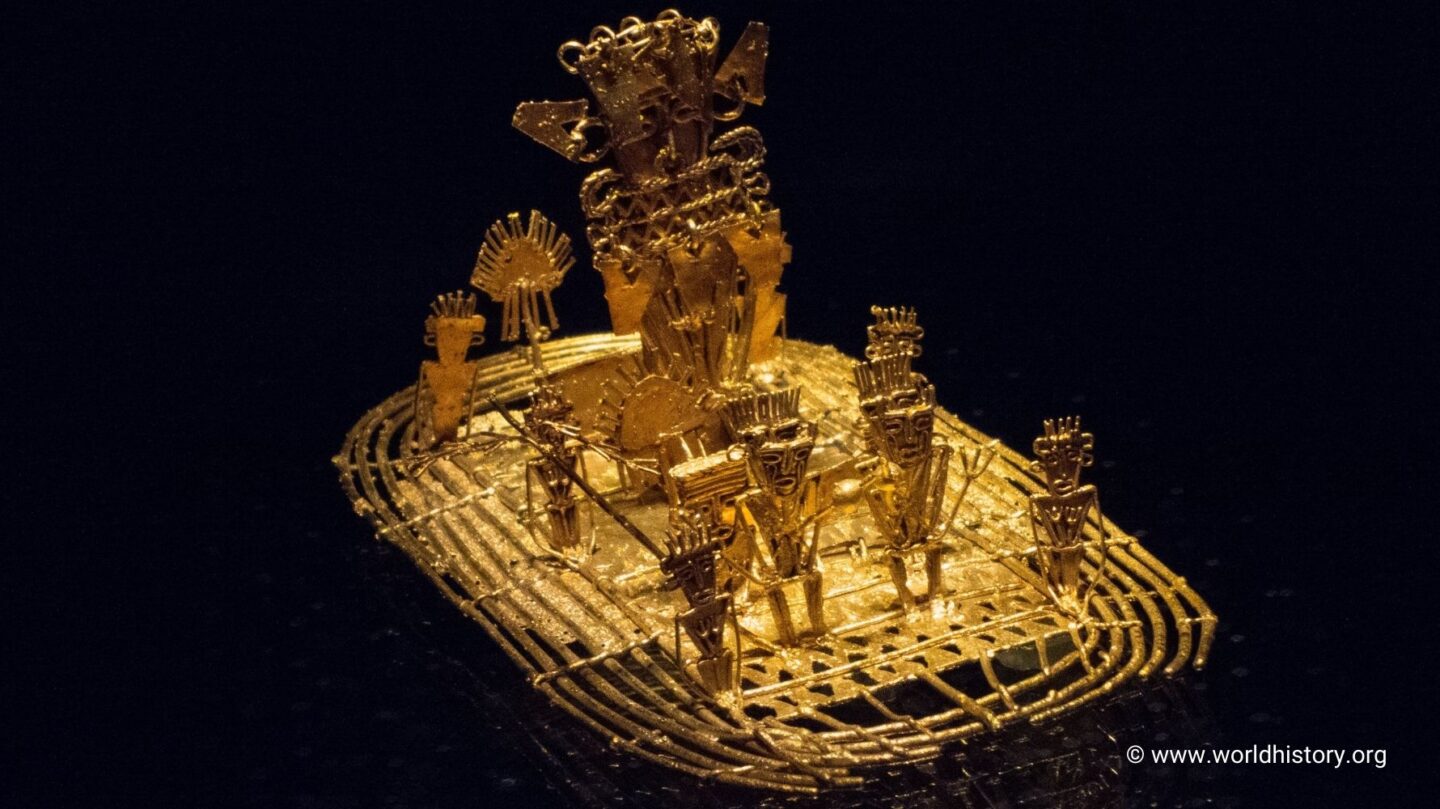The Origins of the El Dorado Myth
The legend of El Dorado, or the “Golden One,” began with stories told by indigenous peoples of South America. The term originally referred to a ritual practiced by the Muisca people in present-day Colombia. According to their tradition, a chieftain would cover himself in gold dust and dive into Lake Guatavita as part of a sacred offering to their gods. Over time, this ritual became conflated with tales of a city or kingdom overflowing with unimaginable wealth.
When Spanish conquistadors arrived in the Americas in the 16th century, they were captivated by the prospect of discovering this fabled land of riches. Fueled by their insatiable desire for gold and glory, they embarked on perilous expeditions to uncover El Dorado, believing it to be hidden deep within the uncharted jungles or mountains of South America.
The Search for the Golden Kingdom
One of the earliest and most infamous expeditions was led by Spanish explorer Gonzalo Pizarro in 1541. Pizarro, along with Francisco de Orellana, ventured into the Amazon rainforest in search of El Dorado. The expedition faced extreme hardships, including starvation, disease, and attacks by indigenous tribes. While Orellana went on to discover the Amazon River, the mythical city of gold remained elusive.
Other explorers, such as Sir Walter Raleigh, also pursued the legend of El Dorado. Raleigh conducted two expeditions to the Orinoco River in present-day Venezuela, convinced that the golden city lay hidden in the region. Despite his efforts, Raleigh returned empty-handed, but his accounts further fueled European fascination with the legend.
Fact or Fiction?
As the centuries passed, it became increasingly clear that El Dorado was not a real place but a powerful myth rooted in cultural traditions. The stories of gold-covered chieftains and hidden riches were likely exaggerated or misunderstood by European explorers eager to find treasure.
The quest for El Dorado reflected a broader theme in human history: the pursuit of paradise and the allure of untold wealth. For the conquistadors, the legend symbolized the ultimate prize—a land where riches and glory awaited those bold enough to claim them.
However, the search for El Dorado came at a great cost. The relentless drive for gold led to the exploitation and destruction of indigenous cultures and ecosystems. Entire communities were decimated, and the environmental toll of mining and exploration left lasting scars on the land.
Lake Guatavita: The Heart of the Legend
Lake Guatavita, a circular lake in Colombia, remains one of the most tangible connections to the El Dorado myth. Spanish explorers attempted to drain the lake in the 16th century, hoping to recover gold offerings left by the Muisca people. While some artifacts were retrieved, the efforts ultimately failed, and much of the lake’s treasures, if they exist, remain submerged.
Today, Lake Guatavita is a protected site, drawing tourists and historians alike who seek to unravel the mystery of El Dorado.
The Legacy of El Dorado
Though El Dorado may never have existed, its legend has left a profound mark on history and culture. The myth inspired countless expeditions, shaping European exploration of the Americas and deepening the connection between wealth and conquest.
In modern times, El Dorado has become a metaphor for unattainable dreams and the human tendency to seek riches and paradise in distant, imagined lands. Its story continues to captivate, reminding us of the power of myth and the enduring allure of the unknown.
The legend of El Dorado is more than a tale of gold; it is a reflection of human ambition, curiosity, and the price of unchecked greed. It remains a powerful symbol of the mysteries and wonders that drive us to explore the world and our own aspirations.
